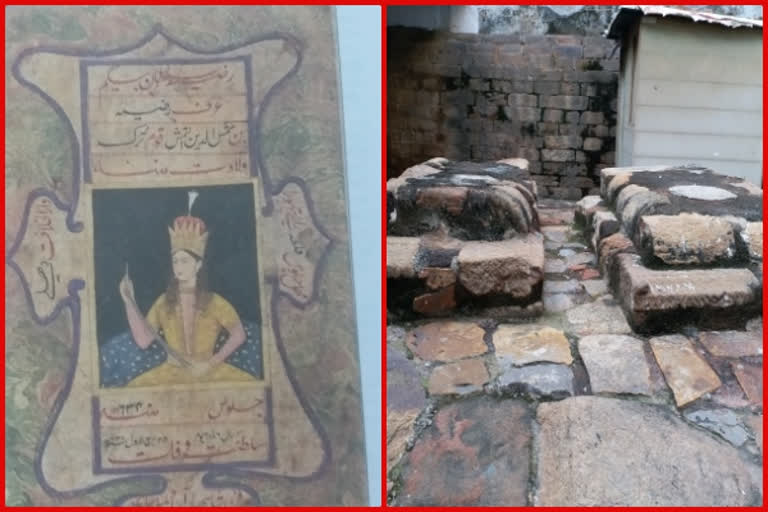New Delhi: Passing through the narrow and congested lanes of Mohalla Bulbuli Khana near Turkman Gate in Old Delhi lies the grave of India's first female ruler, Razia Sultana.
The grave, which according to the 14th-century traveller Ibn Batuta, had become a pilgrimage centre has been neglected by the authorities and people alike.
Even though the Archaeological Survey of India undertakes annual maintenance of the tomb, it has been unable to beautify it further because it is surrounded by illegal construction.
The locals have erected the walls of their houses adjacent to the grave which not only affects its beauty but also becomes a hurdle in its beauty.
Covered by dust and grime, it is clear that the tomb has suffered the ravages of time.
A mosque called Razia Sultan Mosque was also constructed near her grave in the late 20th century by the local residents.
READ: Mirza Ghalib's Haveli - a forgotten treasure
Razia Sultana, popularly known as Razia was born in Old Delhi to Shams-ud-Din Iltutmish who was a Turkic slave and Delhi Sultan of the Slave or Mamluk dynasty.
Iltutmish was also the son-in-law of the founder of slave dynasty Qutab-din-Aibak. Razia's mother – Turkan Khatun (alias Qutub Begum) – was a daughter of Qutab-din-Aibak and the chief wife of Iltutmish. Razia was the eldest daughter of Iltutmish.
Razia reigned Delhi for a period of less than four years during which she faced a lot of rebellion from her nobles who could hardly digest a female ruling over them.
She had ascended the throne with the support of the general public of Delhi rather than that of the powerful Turkic-origin provincial governors. Razia attempted to offset the power of the Turkic nobility by creating a class of non-Turkic nobles, which led to further opposition from the Turkic nobles.
After the rebellion from powerful nobles, Razia was forced to retreat to Kaithal, where she along with her husband was killed by a group of soldiers.



